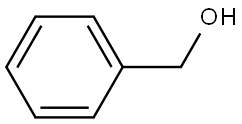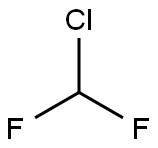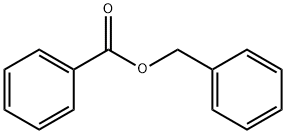Clorofene
Synonym(s):Chlorophene
- CAS NO.:120-32-1
- Empirical Formula: C13H11ClO
- Molecular Weight: 218.68
- MDL number: MFCD00020140
- EINECS: 204-385-8
- SAFETY DATA SHEET (SDS)
- Update Date: 2024-12-18 14:08:52

What is Clorofene?
Chemical properties
Solid
The Uses of Clorofene
In household, hospital and veterinary disinfectant preparations.
The Uses of Clorofene
Used in soaps, anionic detergents, cosmetics and aerosol spray products. It is a useful biochemical for proteomics research.
What are the applications of Application
2-Benzyl-4-chlorophenol is a useful biochemical for proteomics research
Production Methods
Clorofene can be prepared by reaction of 2-benzylphenol with SO2Cl2 at 100 C. It is used as an active agent in disinfectants.
General Description
White to light tan or pink flakes or white crystals. Insoluble in water. Slight phenolic odor.
Air & Water Reactions
Insoluble in water.
Reactivity Profile
Clorofene is incompatible with acids and oxidizing agents . Is sensitive to light. Stable at temperatures up to 77°F when protected from light, but storage at 140° F causes decomposition.
Hazard
Highly toxic, an irritant.
Fire Hazard
Clorofene is combustible.
Flammability and Explosibility
Not classified
Properties of Clorofene
| Melting point: | 46-49 °C(lit.) |
| Boiling point: | 160-162 °C(lit.) |
| Density | 1.188 g/mL at 25 °C(lit.) |
| refractive index | 1.5260 (estimate) |
| Flash point: | >230 °F |
| storage temp. | Sealed in dry,2-8°C |
| solubility | 0.12g/l |
| pka | 9.81±0.43(Predicted) |
| form | powder to crystal |
| color | White to Yellow to Orange |
| PH | 5.3 (H2O, 22.5℃)(saturated aqueous solution) |
| Water Solubility | <0.1 g/100 mL at 16 ºC |
| Merck | 14,2407 |
| BRN | 1959194 |
| NIST Chemistry Reference | Phenol, 4-chloro-2-benzyl-(120-32-1) |
| EPA Substance Registry System | o-Benzyl-p-chlorophenol (120-32-1) |
Safety information for Clorofene
| Signal word | Danger |
| Pictogram(s) |
 Corrosion Corrosives GHS05  Exclamation Mark Irritant GHS07  Health Hazard GHS08  Environment GHS09 |
| GHS Hazard Statements |
H315:Skin corrosion/irritation H317:Sensitisation, Skin H318:Serious eye damage/eye irritation H332:Acute toxicity,inhalation H351:Carcinogenicity H373:Specific target organ toxicity, repeated exposure H410:Hazardous to the aquatic environment, long-term hazard |
| Precautionary Statement Codes |
P273:Avoid release to the environment. P280:Wear protective gloves/protective clothing/eye protection/face protection. P302+P352:IF ON SKIN: wash with plenty of soap and water. P305+P351+P338:IF IN EYES: Rinse cautiously with water for several minutes. Remove contact lenses, if present and easy to do. Continuerinsing. P308+P313:IF exposed or concerned: Get medical advice/attention. |
Computed Descriptors for Clorofene
Clorofene manufacturer
Super Hygienic Chemicals
New Products
4-Fluorophenylacetic acid 4-Methylphenylacetic acid N-Boc-D-alaninol N-BOC-D/L-ALANINOL Tert-butyl bis(2-chloroethyl)carbamate 3-Morpholino-1-(4-nitrophenyl)-5,6-dihydropyridin- 2(1H)-one Furan-2,5-Dicarboxylic Acid Tropic acid S-2-CHLORO PROPIONIC ACID ETHYL ISOCYANOACETATE 2-Bromo-1,3-Bis(Dimethylamino)Trimethinium Hexafluorophosphate (6-METHYL-[1,3]DITHIOLO[4,5-b]QUINOXALIN-2-ONE INDAZOLE-3-CARBOXYLIC ACID 4-IODO BENZOIC ACID (2-Hydroxyphenyl)acetonitrile 4-Bromopyrazole 5,6-Dimethoxyindanone 2-(Cyanocyclohexyl)acetic acid 4-methoxy-3,5-dinitropyridine 2-aminopropyl benzoate hydrochloride 1-(4-(aminomethyl)benzyl)urea hydrochloride diethyl 2-(2-((tertbutoxycarbonyl)amino) ethyl)malonate tert-butyl 4- (ureidomethyl)benzylcarbamate Ethyl-2-chloro((4-methoxyphenyl)hydrazono)acetateRelated products of tetrahydrofuran








You may like
-
 120-32-1 Chlorophene 99%View Details
120-32-1 Chlorophene 99%View Details
120-32-1 -
 2-Benzyl-4-chlorophenol CAS 120-32-1View Details
2-Benzyl-4-chlorophenol CAS 120-32-1View Details
120-32-1 -
 2-Benzyl-4-chlorophenol CAS 120-32-1View Details
2-Benzyl-4-chlorophenol CAS 120-32-1View Details
120-32-1 -
 1975-50-4 98%View Details
1975-50-4 98%View Details
1975-50-4 -
 2-HYDROXY BENZYL ALCOHOL 98%View Details
2-HYDROXY BENZYL ALCOHOL 98%View Details
90-01-7 -
 2-Chloro-1,3-Bis(Dimethylamino)Trimethinium Hexafluorophosphate 221615-75-4 98%View Details
2-Chloro-1,3-Bis(Dimethylamino)Trimethinium Hexafluorophosphate 221615-75-4 98%View Details
221615-75-4 -
 14714-50-2 (2-Hydroxyphenyl)acetonitrile 98+View Details
14714-50-2 (2-Hydroxyphenyl)acetonitrile 98+View Details
14714-50-2 -
 118753-70-1 98+View Details
118753-70-1 98+View Details
118753-70-1